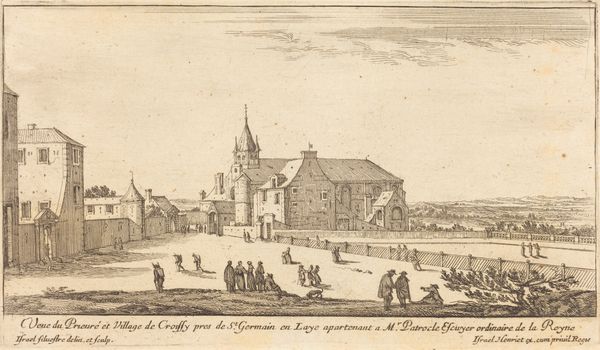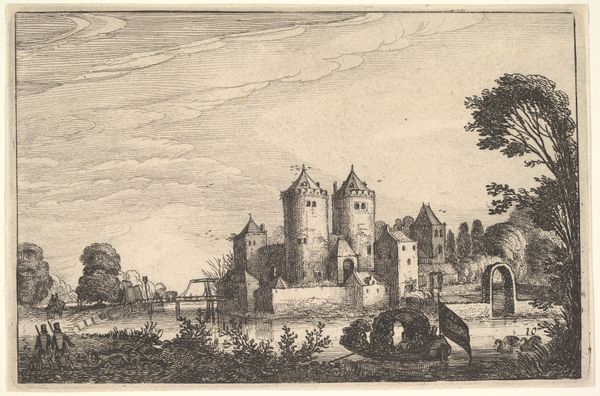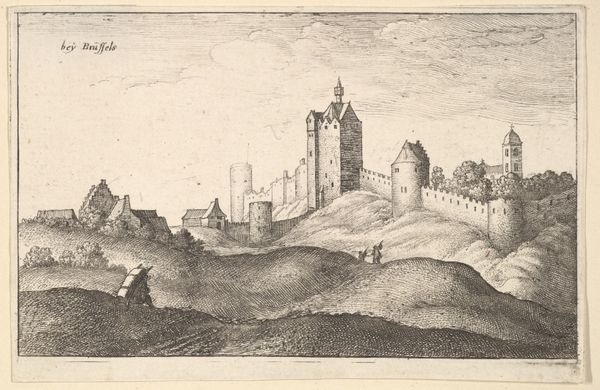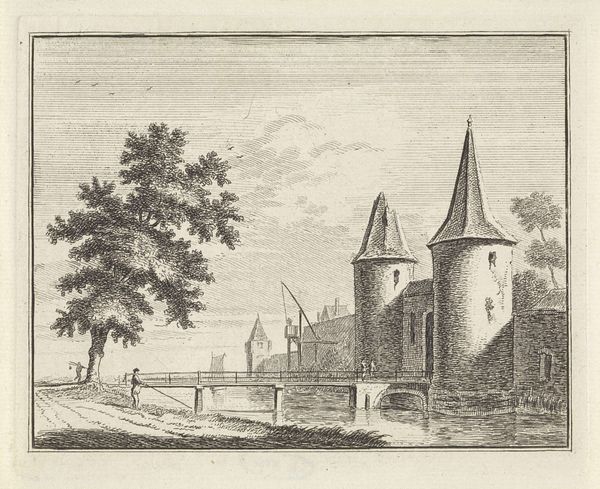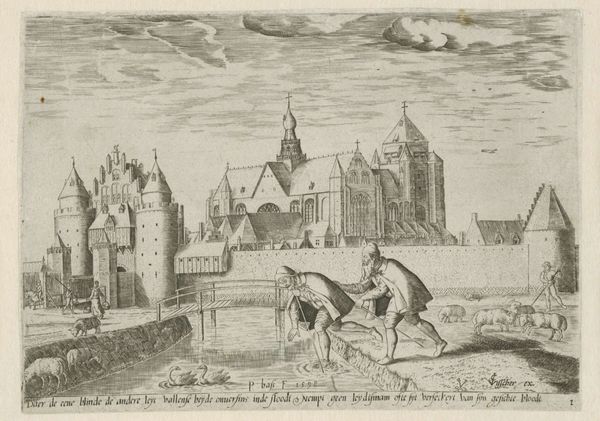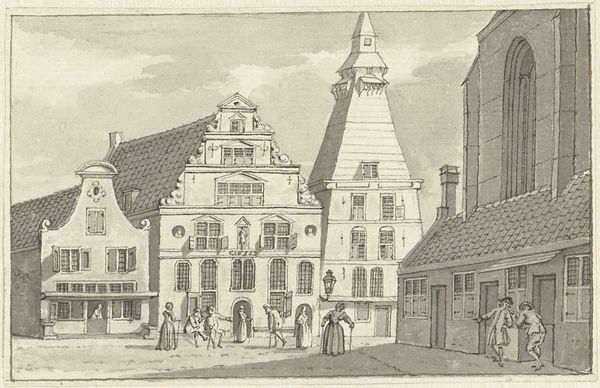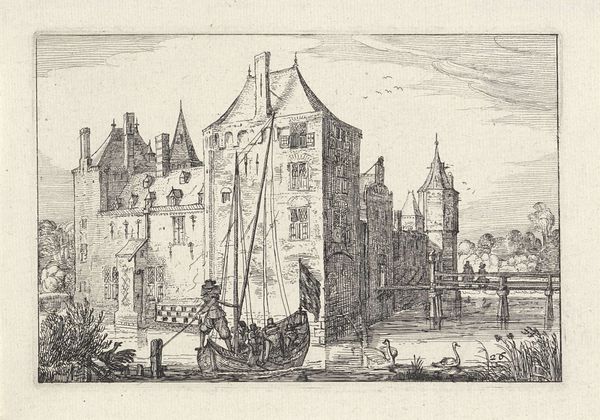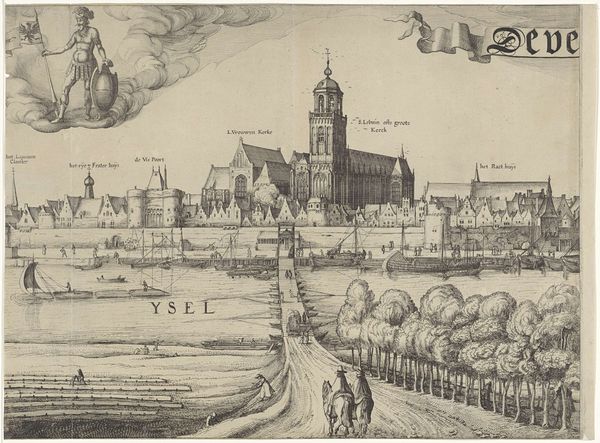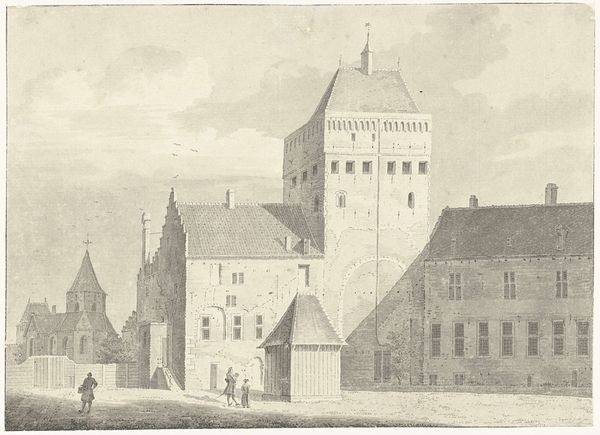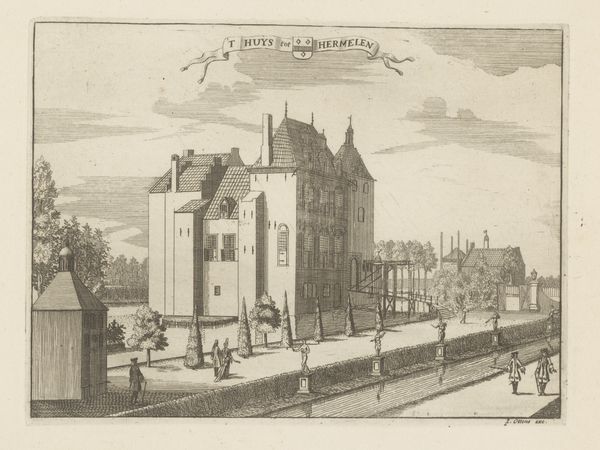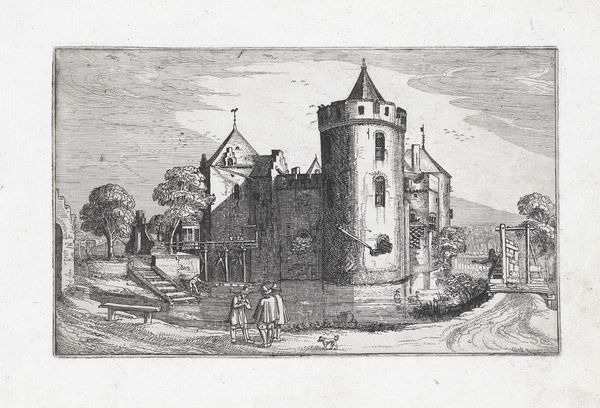
Gezicht op de gevangenistoren in Danzig, gezien vanuit het zuiden 1625
0:00
0:00
drawing, print, etching, ink, engraving
#
drawing
#
dutch-golden-age
# print
#
etching
#
landscape
#
ink
#
cityscape
#
engraving
Dimensions: height 179 mm, width 308 mm
Copyright: Rijks Museum: Open Domain
Curator: What a striking cityscape. The buildings seem almost to reach for the heavens, and yet there’s a kind of somber quality to the image overall. Editor: Yes, Aegidius Dickmann created this etching and engraving, titled “View of the prison tower in Danzig from the south,” around 1625. It's a piece from the Dutch Golden Age currently housed in the Rijksmuseum. I find it interesting for how it documents the urban fabric and civic architecture of the period. Curator: A prison tower! Knowing that gives a certain weight to the overall mood, a somber and perhaps even sinister association. The way it dominates the frame...it's impossible not to imbue the symbol with meaning about societal power. What would such an image evoke for those living under its shadow, do you think? Editor: Absolutely. We should consider Danzig's status then as a major port and member of the Hanseatic League. The tower would stand not just as a symbol of legal authority, but of the city’s power to enforce trade regulations and maintain order within its commercial activities. A powerful graphic shorthand. Curator: And notice the seemingly ordinary people milling about the street, rendered so meticulously. What stories might they tell? I am sure it all added up to the idea that these structures represented cultural identity for the community. Editor: Exactly. The figures bring a very human element to the formidable structures of governance. This etching helps us visualize how early modern city dwellers navigated—both literally and conceptually—the imposing architecture of their world, and the socio-political hierarchies it implied. Curator: For me, this is more than just a static representation; it gives clues to collective experience in that period. It seems like a window into the very psychology of the Dutch Golden Age. Editor: Yes, indeed, an important artifact. These views remind us how public images contributed to a city's identity, both for its residents and for external perceptions of its power. Curator: I agree. After analyzing the artwork, one cannot stop imagining the kind of community which the art served as both cultural representation and symbol of local life. Editor: This print is just one small artifact among countless pieces of our shared history, and yet each object and image helps us learn how societal identity took shape centuries ago.
Comments
No comments
Be the first to comment and join the conversation on the ultimate creative platform.
